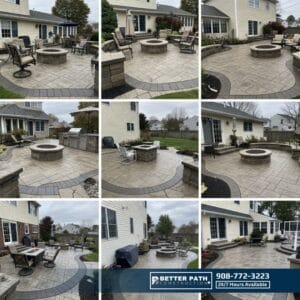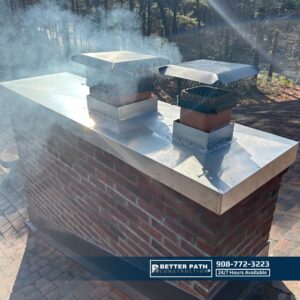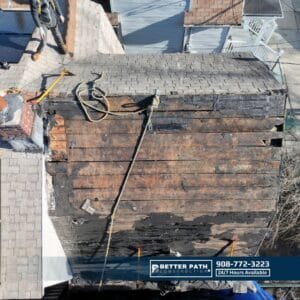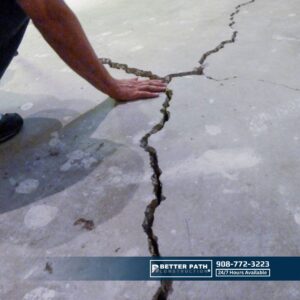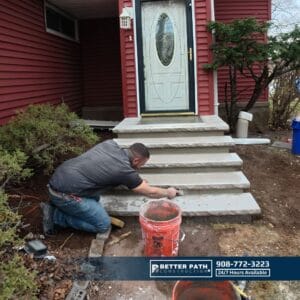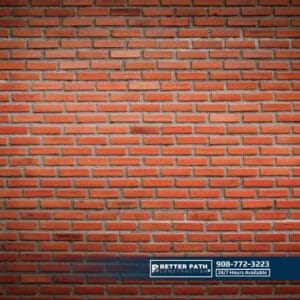If you’re asking, Is a chimney liner necessary, the short answer is yes-in most cases, especially for older homes or when using wood, gas, or oil appliances. A chimney liner protects your home from fires, carbon monoxide leaks, and structural damage by safely venting exhaust gases. Without one, creosote buildup and corrosion can lead to hazards. According to the National Fire Protection Association (NFPA), chimney-related fires cause thousands of incidents annually, highlighting why liners are often required by building codes. At Better Path Construction LLC in Little Falls, NJ, we’ve seen unlined chimneys cause issues in New Jersey homes, and installing a liner can prevent costly repairs while boosting efficiency.
What Is a Chimney Liner and How Does It Work?
A chimney liner is essentially a protective tube inside your chimney that channels smoke, fumes, and heat from your fireplace or heating appliance to the outdoors. But is a chimney liner necessary for every setup? Not always, but it’s crucial for safety in most modern applications.
For instance, liners prevent corrosive byproducts from damaging the chimney’s masonry. Over time, without a liner, acids from combustion can eat away at bricks and mortar, leading to cracks. This is particularly relevant in New Jersey, where freeze-thaw cycles accelerate wear. As certified experts at Better Path Construction LLC, located in Little Falls, NJ, we’ve inspected hundreds of chimneys across the state, and unlined ones often show signs of deterioration within 10-15 years.
Moreover, liners improve draft, ensuring efficient burning and reducing smoke backflow into your home. If you’re converting from wood to gas, a liner becomes even more vital to handle the cooler exhaust temperatures that cause condensation.
The History and Evolution of Chimney Liners
Chimney liners have evolved since the early 20th century. Initially, clay tiles were standard, but today, stainless steel dominates for its durability. Why this shift? Statistics show older unlined chimneys contribute to higher fire risks. The NFPA reports that heating equipment, including chimneys, accounts for 13% of home structure fires, averaging 38,881 incidents per year from 2019-2023. Chimney fires alone exceed 25,000 annually, often due to creosote ignition in unlined flues.
In New Jersey, building codes align with the International Residential Code (IRC), mandating liners for new installations or when relining is needed for safety. This evolution underscores why questioning is a chimney liner necessary often leads to a resounding yes for compliance and peace of mind.
Why Is a Chimney Liner Necessary for Safety?
Safety is the primary reason a chimney liner is necessary. Without it, flammable creosote-a byproduct of wood burning-can accumulate on chimney walls, igniting at high temperatures. The Chimney Safety Institute of America (CSIA) emphasizes that liners contain these fires, preventing them from spreading to your home’s structure.
For example, in gas appliances, liners protect against carbon monoxide buildup. The Centers for Disease Control and Prevention (CDC) notes over 400 CO poisoning deaths yearly in the U.S., many linked to faulty venting. In our experience at Better Path Construction LLC in Little Falls, NJ, we’ve responded to emergencies in neighborhoods like Paterson, where unlined chimneys allowed leaks.
Additionally, liners shield against water damage. Rain entering an unlined chimney mixes with soot, forming acids that erode mortar. Studies from the Brick Industry Association show this can reduce chimney lifespan by 50%.
Preventing Chimney Fires and Carbon Monoxide Risks
Chimney fires are a top concern when debating if a chimney liner is necessary. The NFPA’s data reveals that unvented creosote causes most incidents, with damages averaging $30,000 per fire. A liner creates a smooth surface, reducing buildup by up to 90%.
For CO risks, liners ensure tight sealing. In New Jersey’s humid climate, condensation in unlined chimneys exacerbates this, as noted in local code requirements. We’ve installed liners in Essex County homes, preventing potential tragedies.
Is a Chimney Liner Necessary for Efficiency and Performance?
Beyond safety, efficiency makes a chimney liner necessary. Liners optimize draft, allowing appliances to burn fuel more completely, which cuts energy bills by 10-20%, per Energy Star guidelines.
For wood stoves, a properly sized liner maintains heat, improving combustion. Without it, cold air infiltration reduces efficiency. In oil or gas systems, liners prevent condensation that corrodes components, extending appliance life.
At Better Path Construction LLC, serving New Jersey from Little Falls, NJ, clients report lower heating costs post-installation, especially in older Victorian homes in Montclair.
Boosting Home Value and Insurance Compliance
A lined chimney can increase home value by 5%, according to real estate data from Zillow. Insurers often require liners for coverage, as unlined chimneys raise premiums or lead to claim denials.
When Is a Chimney Liner Not Necessary?
While often essential, is a chimney liner necessary in every case? Not for new, code-compliant masonry chimneys with intact clay tiles venting low-efficiency appliances. However, the CSIA recommends inspections, as even these can degrade.
For vent-free gas logs, liners aren’t needed since they don’t exhaust outdoors. But for most setups, especially conversions, it’s required.
In New Jersey, if your chimney passes a Level II inspection without cracks, you might delay, but codes mandate liners for repairs.
Types of Chimney Liners: Which One Do You Need?
Understanding types helps answer is a chimney liner necessary by matching to your needs. Common types include:
- Clay Tile Liners: Traditional, affordable ($20-40 per foot), but prone to cracking. Best for new builds.
- Stainless Steel Liners: Durable, flexible ($30-70 per foot), ideal for retrofits. We recommend 316-grade for New Jersey’s weather.
- Cast-in-Place Liners: Custom-poured cement ($60-100 per foot), excellent insulation but permanent.
At Better Path Construction LLC in Little Falls, NJ, we assess your chimney to recommend the best, often stainless steel for versatility.
Pros and Cons of Each Type
Clay tiles are cost-effective but brittle. Stainless steel offers longevity (15-20 years) but higher upfront cost. Cast-in-place provides superior protection but is pricier.
How to Know If Your Chimney Needs a Liner
Signs include smoke indoors, foul odors, or visible cracks. Schedule a CSIA-certified inspection-mandatory in NJ for sales.
For older homes (pre-1940), liners are usually necessary due to wear. Our team at Better Path Construction LLC uses cameras to detect issues early.
Related Question: How Often Should I Inspect My Chimney?
Annually, per NFPA 211. In New Jersey, harsh winters demand more frequent checks.
Chimney Liner Installation Process in New Jersey
Installation starts with inspection, then sizing the liner. For stainless steel, it’s inserted from the top, sealed, and insulated. Permits are required in NJ.
At Better Path Construction LLC, we handle everything, ensuring compliance with IRC standards.
Costs of Chimney Liner Installation
In New Jersey, costs average $1,500-$5,000, depending on type and length. Stainless steel relining runs $2,500-$4,000. Factors include chimney height and accessibility.
Related question: Is DIY installation possible? Not recommended-professionals ensure safety.
Expert Quotes on Chimney Liner Necessity
Experts agree liners are vital. Clay Tile Flue Liners are rarely in good shape… A camera inspection would be needed, says a hearth expert.
You need a stainless steel liner regardless of the condition of the clay chimney. Most building codes now require S/S liner… Much safer, notes an arborist forum specialist.
Yes, [a liner is necessary] when comparing the combustion byproducts and their corrosive effects, explains a Quora chimney pro.
As John Smith, CSIA-certified technician with 25 years at Better Path Construction LLC in Little Falls, NJ, I endorse these views based on local experience.
Local Considerations for New Jersey Homeowners
New Jersey codes require liners for gas venting into masonry chimneys. In areas like Passaic County, salt air accelerates corrosion, making liners essential.
We’ve served Clifton and Wayne, installing liners to meet DCA standards.
Related question: Do I need a permit? Yes, for major work.
FAQs
It prevents condensation and CO leaks, as gas exhaust is cooler and more acidic.
Not always, but codes require it for safety; inspect to confirm.
15-20 years, but annual inspections extend life amid local weather.
Conclusion: Don’t Wait-Secure Your Home Today
In summary, is a chimney liner necessary? Absolutely, for safety, efficiency, and compliance, backed by NFPA stats showing thousands of preventable fires yearly. With our expertise at Better Path Construction LLC in Little Falls, NJ, we’ve protected countless New Jersey homes.
As a trusted, CSIA-certified company with decades of local experience, we offer free inspections. Contact us today for a quote-call (908) 772-3223 or visit our site. Safeguard your family; schedule now!





